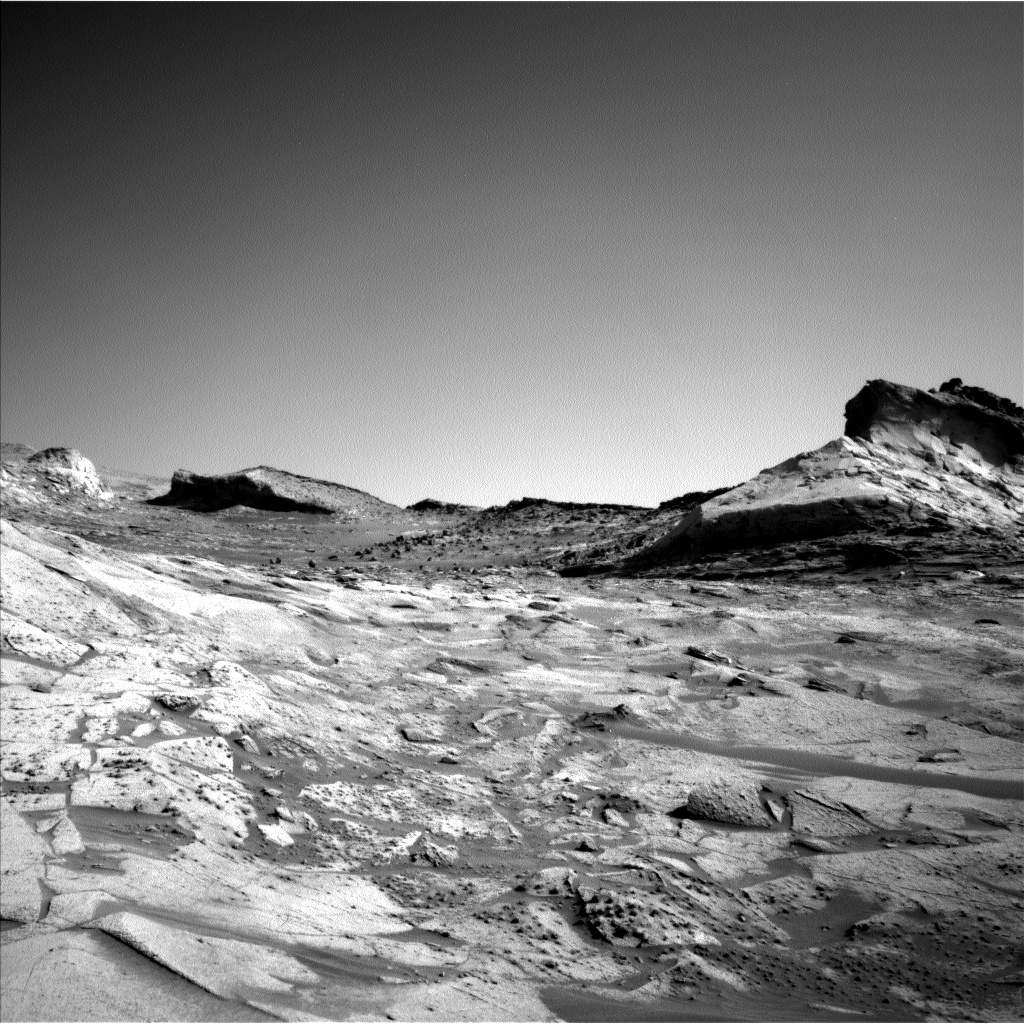2 min read

Our short drive over the weekend successfully landed us within half a meter of our desired parking elevation for our next attempt at drilling in Gale crater. Among the sites surrounding us is the steep, shadowed cliff visible in the upper left corner of the image above. That cliff marks the western wall of our narrow passageway up Mount Sharp, which the team has named “Maria Gordon Notch.” Maria Ogilvie Gordon was a Scottish scientist in the late 19th and early 20th centuries with expertise in geology, paleontology, and zoology. She combined her knowledge of modern and fossil corals and extensive fieldwork campaigns to describe the geologic history and stratigraphy of the Dolomite Mountains of Italy. Her work earned her the first Doctor of Science awarded to a woman in the United Kingdom. While Curiosity might not find corals on her way up Mount Sharp, she will certainly strive to follow Maria Gordon’s example of careful, thorough and important geologic work!
As we sit within view of Maria Gordon Notch, the science team thought it only natural to name our next drill site after her, too. Thus, today’s plan focused on brushing the candidate drill target, “Maria Gordon,” followed by MAHLI imaging, APXS analyses, and load testing of the target. We also ran a CheMin empty cell analysis to make sure that vessel is ready to receive sample. Those activities and the next anticipated activity - drilling itself - require a lot of power, so there was not much time for additional science observations. REMS, DAN, and RAD will run at their regular cadence across the two sols of the plan, but the only additional environmentally-focused observation we added was a Navcam dust devil survey. The geology working group managed to squeeze in a survey of their own, a 360 degree Mastcam mosaic acquired early in the morning. The early morning time was desired to get lighting on the east-facing cliffs - including Maria Gordon Notch - rising from the terrain around us. The mosaic will surely provide a great overview of this site, and will help guide our subsequent observations among our own mountains of exploration.
Written by Michelle Minitti, Planetary Geologist at Framework







